Sassoforte Castle
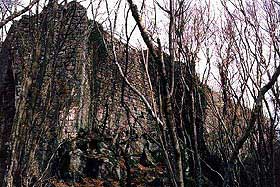 |
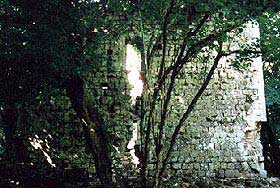 |
Photo and History by Guidoriccio
The rests of Sassoforte can be reached from the country of Sassofortino. Coming from the speedway Florence-Siena you'd to exit for 'Civitella Marittima' and then is continue for Roccastrada first and Roccatederighi then. Here you'll find the indications for Sassofortino and Sassofote.
The Castle of Sassoforte belonged, as a large part of the Maremma's castles, to the counts of the Aldobrandeschi family. The most ancient citation is of 1076 and concerns the donation of an oratory (SS. Margherita and Lucia in Sassoforte) and of other goods done by the Count Ildebrando Aldobrandeschi to the Church of Montemassi. The Aldobrandeschi are also remembered in 1221, when was reinstated by the emperor Federico II 'the dominion and the laws' of their vassal named Uguccione of the Ardengheschi from Sassoforte.
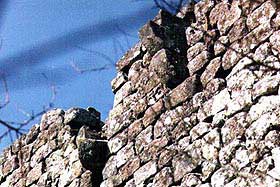 |
Nevertheless, subsequently, the Ardengheschi, Lord of Sassoforte, tried of to free themselves from the dominion of the Aldobrandeschi, following an opportunistic politics and subduing in 1254 the castle to Siena to receive help to upset the power of Umberto Aldobrandeschi.
From this moment begins a period of relative autonomy for Sassoforte that tried to extend their influence on the other castles of this part of the Maremma with continuous skirmishes against the Aldobrandeschi and other nobles of the zone. This aggressive politics worried Siena that, welcoming the request of the inhabitants of the near town of Roccatederighi, made a military intervention for bringing back the owners of Sassoforte to the order.
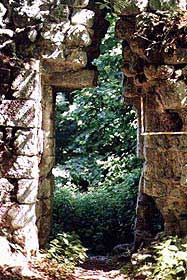 |
In 1328 the commander Guidoriccio da Fogliano besieged the castle of Sassoforte that capitulated in a short time. Of this defeat took advantage again the Aldobrandeschi that, in search of vengeance, after having conducted in chains to Santa Fiora Ghinozzo, last Count of Sassoforte, taken the castle and in 1330 sold it to Siena for 5.500 gold florins. This, fearing the strong position of this fortress, ordered that the walls and the keep were destroyed while earths were being granted to the inhabitants at the annual fee of 600 liras. In the castle, although the fortifications were destroyed, continued to live a substantial number of persons under uncomfortable conditions. The inhabitants, decimated from the poverty and from the plague, were reduced in 1353 to only 50 persons; the castle or what remained of it, passed in 1368 to the Salimbeni but the castle continued its unstoppable degrade until, in the March 1438, the suburb was declassed and the inhabitants bringed to the new inhabited area called Sassofortino.
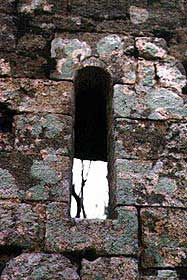 |
The forgetfulness of the centuries and the vegetation took possession on Sassoforte. The rests of this castle are extended for the whole circumference of a crag, at the summit of the Sassoforte mountain. The walls, the towers, the keep, were built with a good technique and we can still admire their notable architectural particulars.
The walls had to be without doubt imposing even if perhaps won't have the same characteristics along the whole perimeter, due to the position of the territory on which the castle rose, surrounded by precipices and therefore not easily accessible.
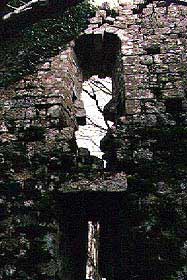 |
Toward northwest we found the keep; this is a high construction still provided of the gate of access with a decoration formed by vegetable motive. Above this, the breteche for the defense of the entrance. In front of the walls we found a rectangular construction equipped by beautiful windows. Everything denotes a care, mastery and refinement in the details so much to individualize a building of non common use, of notable dimensions and endowed with structures not frequent in the zone and certainly between the finest of the district, to testimony of the power reached by the Lord of Sassoforte.
The visit is particularly evocative for the secular chestnut wood that we have to cross climbing by feet the mountain to reach the ruins, for the sensation of gradual discoveries and for the panoramic sights toward the sea and the inside.
| Back to Homepage |
| Back to Castles Index |
